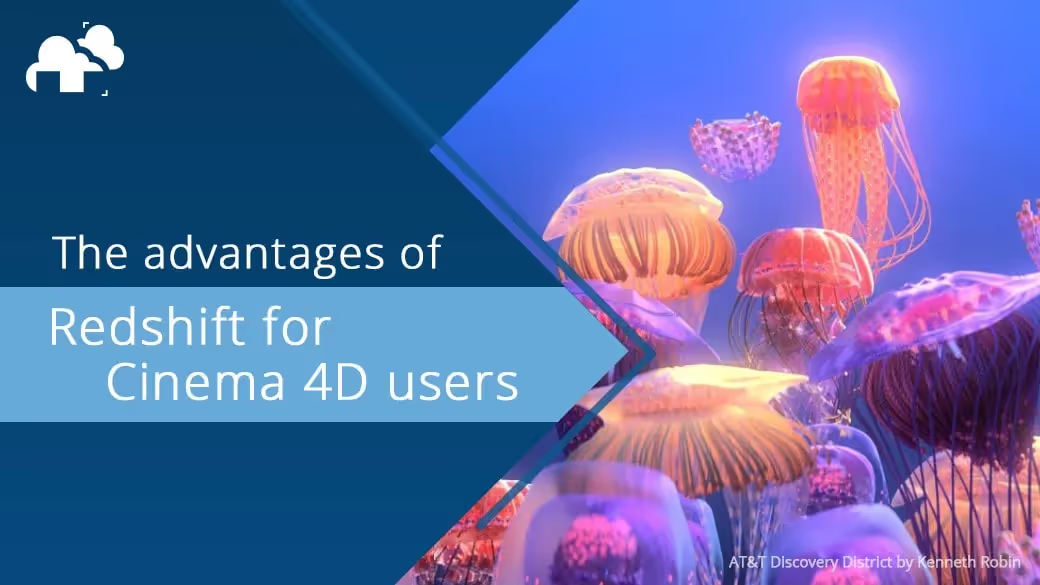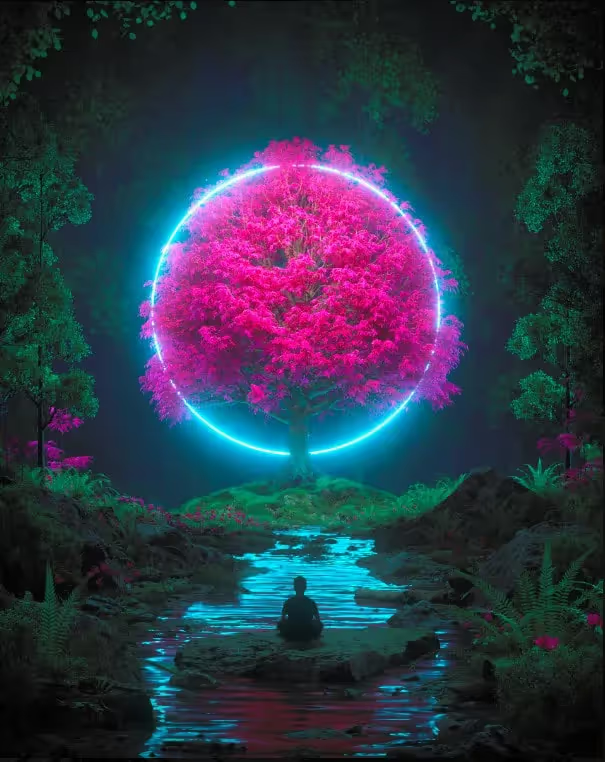
When it comes to 3D packages, Cinema 4D has been the standard of motion designers for decades. Its easy-to-use software allows users to hop in and hit the ground running while providing unique and innovative tools and workflows. Well known for its MoGraph features, Cinema 4D takes concepts that might be a barrier to some and turns them into fun and intuitive feature sets. Over the years, Cinema 4D has built upon these concepts. It continues to innovate with wonderful new effectors and fields to control your animation in many ways, often touting that you don’t even need to keyframe to get fun, immersive animations.
Redshift hit the scene in 2014 as an innovative GPU-accelerated, biased render engine. It quickly rose in popularity due to its lightning-fast speed and flexibility it gave its users. No matter the size of the operation or budget for a project, being a biased renderer, Redshift offers you the capability to adjust the quality and performance to fit your needs. Redshift can deliver spectacular results from photorealism to stylized character animations and motion graphics with a few simple clicks.

However, even with a powerful GPU-accelerated renderer such as Redshift, whether it be individuals looking for that high-end render or a small studio with a budget forefront in mind, rendering in-house just isn’t an option. Enter GarageFarm.NET. GarageFarm provides a fantastic cloud rendering service that integrates perfectly with their C4D and Redshift render farm. Providing affordable ways to get the render quality you’re after at the price you need. With thousands of render nodes and its simple plug-and-play workflow, GarageFarm makes cloud-based rendering intuitive and cost-effective.
Their seamless workflow with the renderBeamer plugin makes it easy to upload and render projects right from the Cinema 4D interface. Intuitive tools allow you to upload your projects, estimate project costs, and manage your priorities, all with flawless Redshift integration. Materials, lights, volumes, and post-render processes are all supported and rendered without issue. On top of all that, if a problem does arise, the GarageFarm Support Team is there to help. Top-notch tech support is easily accessible through an online chat. Speaking from personal experience, every interaction I have had with them has been positive. Check their Cinema 4D render farm out!
Looking into what render engine to use can be a daunting task. There are many to choose from, and each has its pros and cons, but we are here to talk about Redshift, and for a good reason. Redshift has skyrocketed in popularity primarily due to its blazing speed, interactive RenderView, and ability to tailor your render settings to fit the needs of your project. Being a GPU-accelerated biased render engine, Redshift blows CPU-based render engines out of the water in terms of speed. The RenderView is Redshifts IPR (Interactive Preview Region); these are available in many third-party renders and can completely change how you work. RenderView gives you an almost instant view of your render, changing with your scene as you work.
On top of that, over the past few years Maxon, the parent company of Cinema 4D, has been buying up other software and plugins that now make up Maxon One. Including plugins from Red Giant, Universe, Forger, and, you guessed it, Redshift. With Maxon One’s subscription payment method, you can easily stay up to date with the latest versions of all your favorite software.
This union of Cinema 4D and Redshift under the Maxon umbrella makes the experience even better. Up-to-date development in cohesion with each other makes for an ultra-slick workflow with minimal hiccups.

Redshift, in general, is a powerhouse of a render engine. It is blazing fast, giving the user the flexibility to add more power to their system. The IPR render is fast and has comprehensive sampling customization settings, allowing you to optimize like never before. The easy-to-use AOV system makes rendering out several different passes and compositing a breeze.
In my own personal work, I have been using both Cinema 4D and Redshift for years. Recently I have been working on 3D projection mapping projects that need quick concept work for approvals and then quick turnaround time, as well as being top-notch visually. The power of Redshift has allowed me to keep my renders as optimized as possible. Flexible enough to let me work in many ways, I can achieve the results I desire, in the time I need, all within budget. Pairing this with Cinema 4D and its mograph objects and effectors gets me the look I need by the deadline.
The Redshift for Cinema 4D can produce fantastic results in many styles, from photorealism to highly stylized.

In the end, when choosing a renderer, you would be hard-pressed to find a better alternative than Redshift when using Cinema 4D. These are now both owned by Maxon, making the buying process simple, the integration smooth, and the experience superb. Redshift has been known for years as a blazing-fast GPU render engine that is easy to use and offers everything you want regarding feature set and flexibility. It allows its users to customize the performance to fit their specific needs and provides an IPR that is second to none. At the same time, Cinema 4D continues to push the bounds of 3D motion design with its innovative toolsets and user-friendly workflows. Combining these two under one umbrella will surely drive the innovation we see to new limits in the years to come.
Redshift for Cinema 4D can help you produce the works you have always dreamed of, while GarageFarm provides unparalleled dependability in cloud-based rendering. Intuitive in platform plugins, top-notch support, and integration with various software and plugins means GarageFarm has you covered no matter what.
Written by Alex Jerome